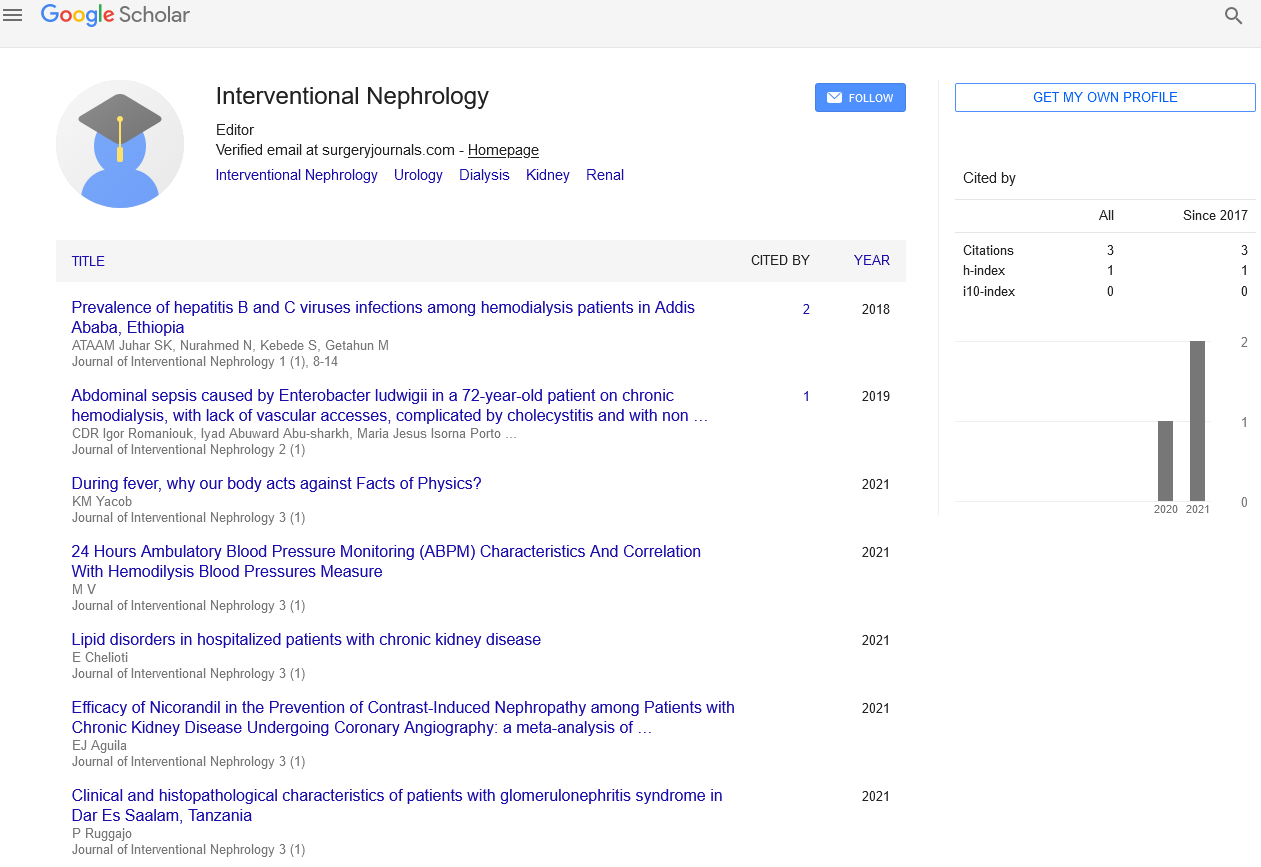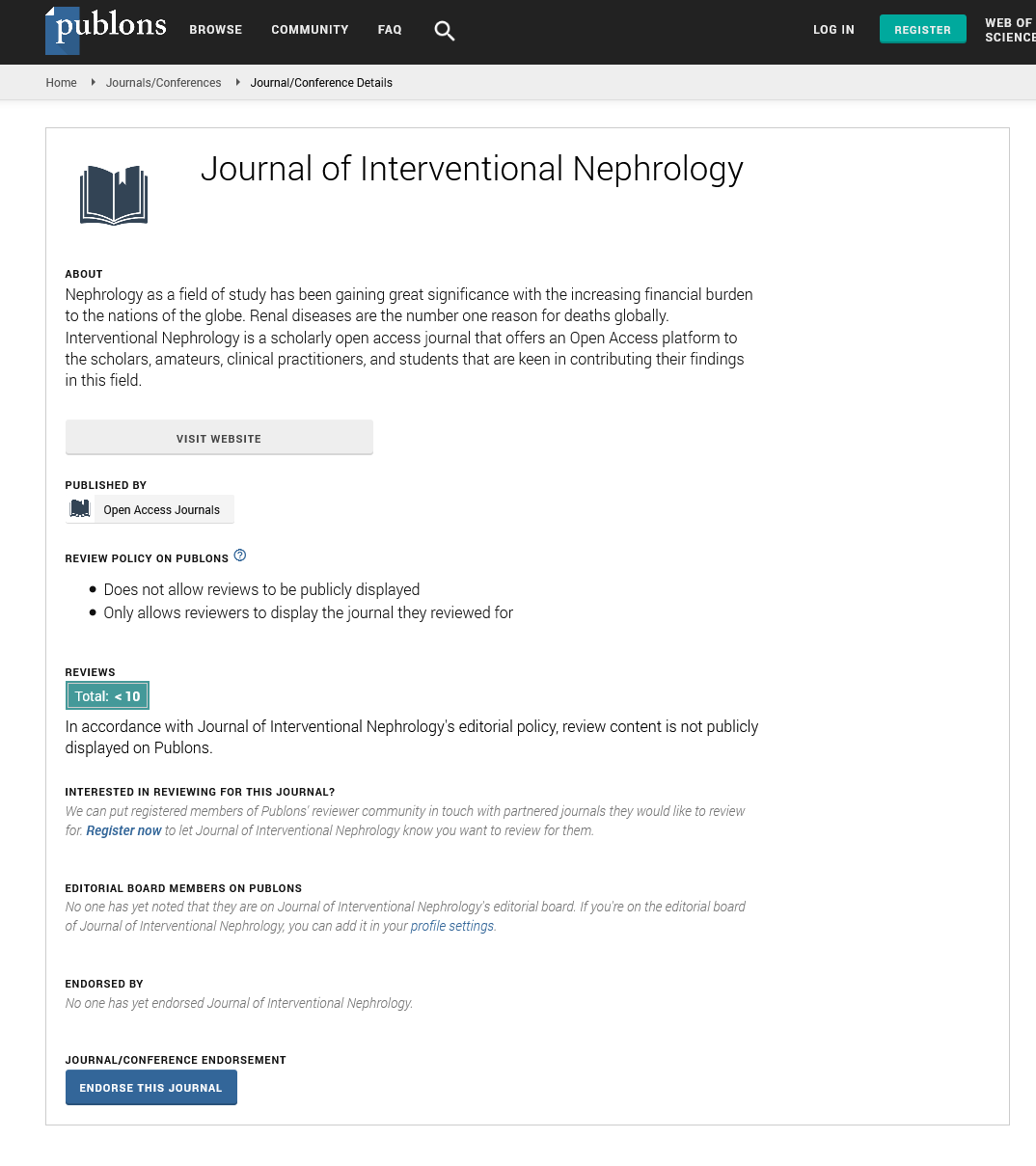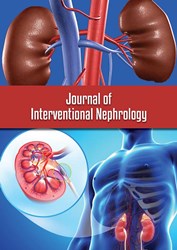Perspective - Journal of Interventional Nephrology (2024) Volume 7, Issue 4
Advances in Vascular Access for Hemodialysis
- Corresponding Author:
- Xiaotong Zhang
Department of Nephrology, MVN University, Italy
E-mail: XiaotongZhang444@es.edu
Received: 29-Jul-2024, Manuscript No. OAIN-24-143638; Editor assigned: 31-Jul-2024, PreQC No. OAIN-24-143638 (PQ); Reviewed: 13-Aug-2024, QC No. OAIN-24-143638; Revised: 20-Aug-2024, Manuscript No. OAIN-24-143638 (R); Published: 30-Aug-2024, DOI: 10.47532/oain.2024.7(4).302-303
Introduction
In the realm of nephrology, vascular access is a critical component of hemodialysis, enabling effective treatment for patients with End-Stage Renal Disease (ESRD). The optimal vascular access minimizes complications such as infection and thrombosis while maximizing longevity and patient comfort. This article explores recent advancements in vascular access for hemodialysis, focusing on innovative techniques and technologies that promise to improve outcomes and enhance patient care.
Description
Types of vascular access
Traditionally, vascular access options for hemodialysis include Arteriovenous Fistulas (AVFs), Arteriovenous Grafts (AVGs), and Central Venous Catheters (CVCs). AVFs are preferred due to their superior longevity and lower infection rates compared to AVGs and CVCs. However, they require adequate arterial and venous anatomy and may take several months to mature before they can be used for hemodialysis. AVGs, made of synthetic material, are an alternative when AVFs are not feasible. CVCs are typically used as a temporary solution or in emergencies but are associated with higher infection and thrombosis rates.
Recent technological innovations
Advances in vascular access technologies have focused on improving the functionality and durability of AVFs and AVGs. One notable innovation is the development of bioengineered vascular grafts that mimic natural vessel properties, reducing the risk of thrombosis and infection. These grafts promote endothelialization and integration with surrounding tissue, enhancing long-term patency.
Furthermore, there has been significant progress in the field of endovascular techniques for maintaining and salvaging dysfunctional vascular accesses. Percutaneous Transluminal Angioplasty (PTA) and stenting have become standard procedures for treating stenosis and thrombosis within AVFs and AVGs. These minimally invasive interventions not only restore blood flow but also prolong access site viability, thereby reducing the need for access revision surgeries.
Patient-centered approaches
Patient-centered care is integral to improving outcomes in vascular access for hemodialysis. Tailoring vascular access selection to individual patient characteristics such as vessel size, quality, and comorbidities is crucial. Shared decision-making between patients, nephrologists, and vascular specialists ensures that the chosen access type aligns with patient preferences and lifestyle considerations.
Moreover, patient education plays a pivotal role in optimizing vascular access outcomes. Educating patients about the importance of access care, monitoring for complications, and recognizing early signs of dysfunction empowers them to actively participate in their treatment journey and improves long-term access patency.
Challenges and future directions
Despite advancements, challenges persist in vascular access for hemodialysis. Issues such as access-related infections, thrombosis, and vascular calcification continue to impact patient outcomes. Addressing these challenges requires ongoing research into novel biomaterials, targeted drug delivery systems, and personalized medicine approaches.
Looking ahead, future directions in vascular access research include the exploration of tissue engineering and regenerative medicine techniques to develop bioartificial vessels that integrate seamlessly with the host tissue. Additionally, advancements in imaging modalities and predictive analytics may facilitate early detection of access dysfunction, enabling preemptive interventions to prolong access lifespan and improve patient quality of life.
Conclusion
Advances in vascular access for hemodialysis represent a pivotal area of innovation within nephrology, aimed at enhancing patient outcomes and quality of life. From bioengineered grafts to minimally invasive endovascular interventions, these advancements underscore a shift towards personalized, patient-centered care. Continued collaboration between nephrologists, vascular specialists, and biomedical engineers is essential to overcoming current challenges and shaping the future landscape of vascular access in hemodialysis.
In summary, while the field of vascular access for hemodialysis continues to evolve, the ultimate goal remains unchanged: to provide patients with reliable, durable access options that optimizes their hemodialysis treatment and improves overall health outcomes.


